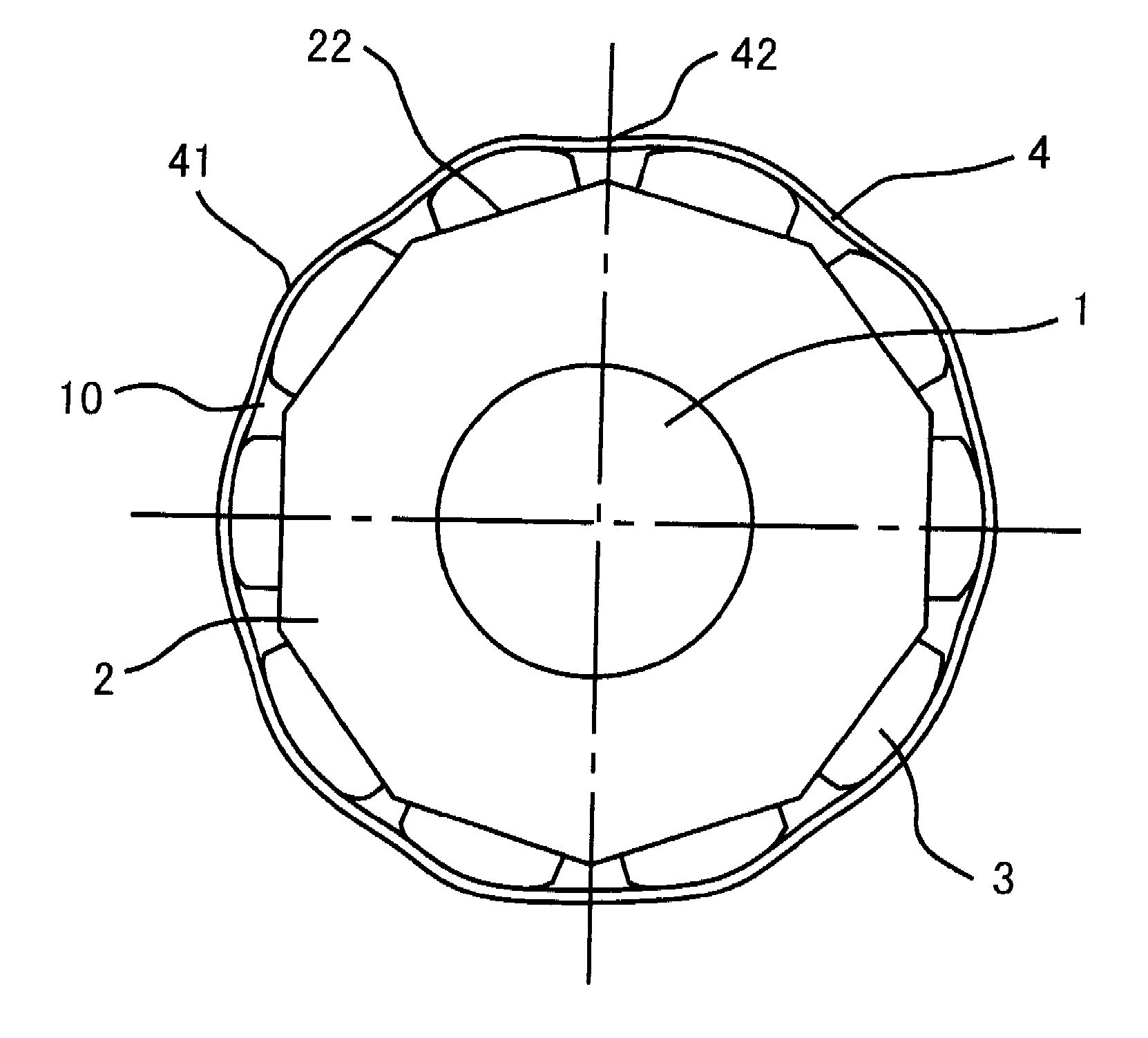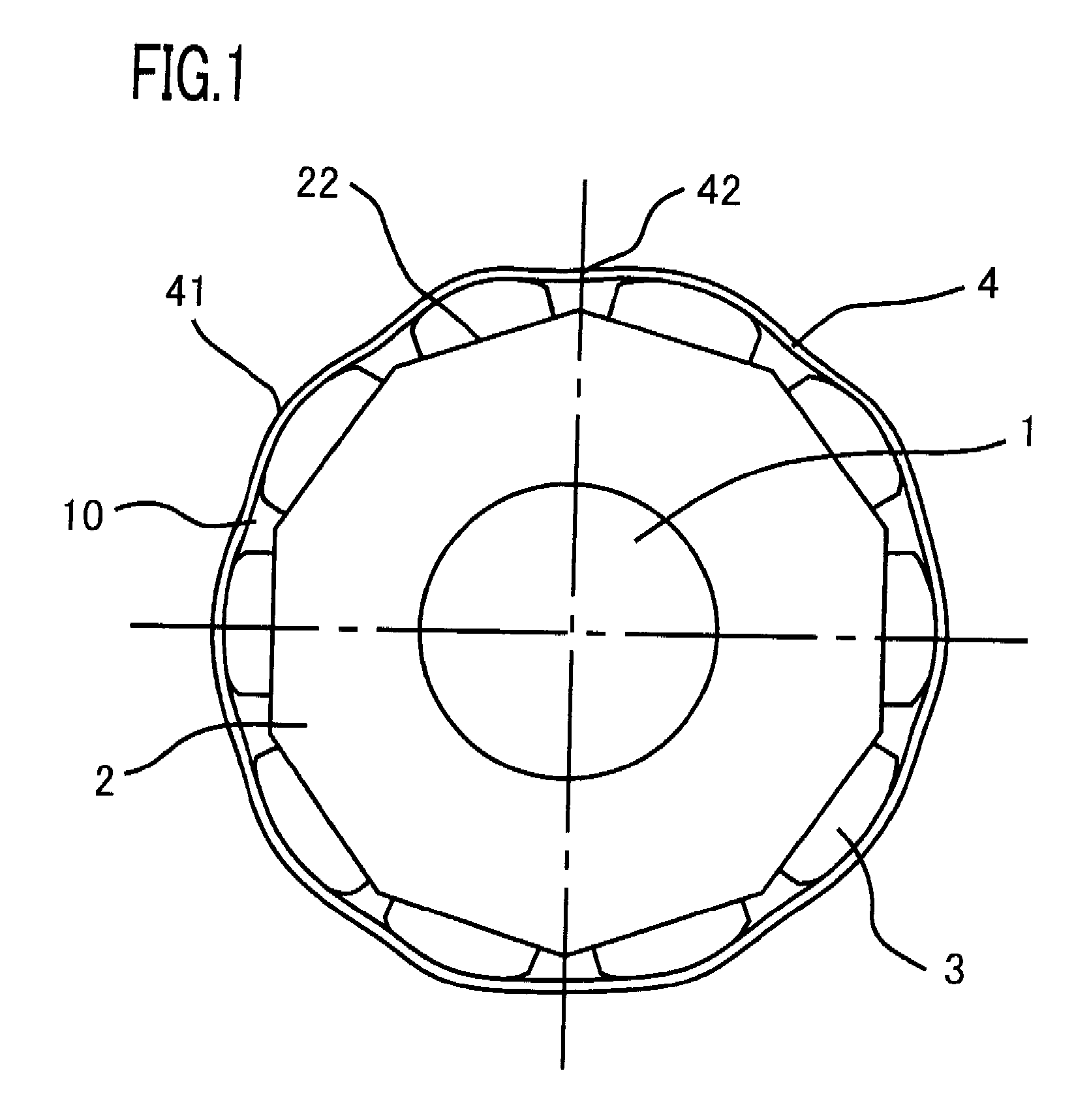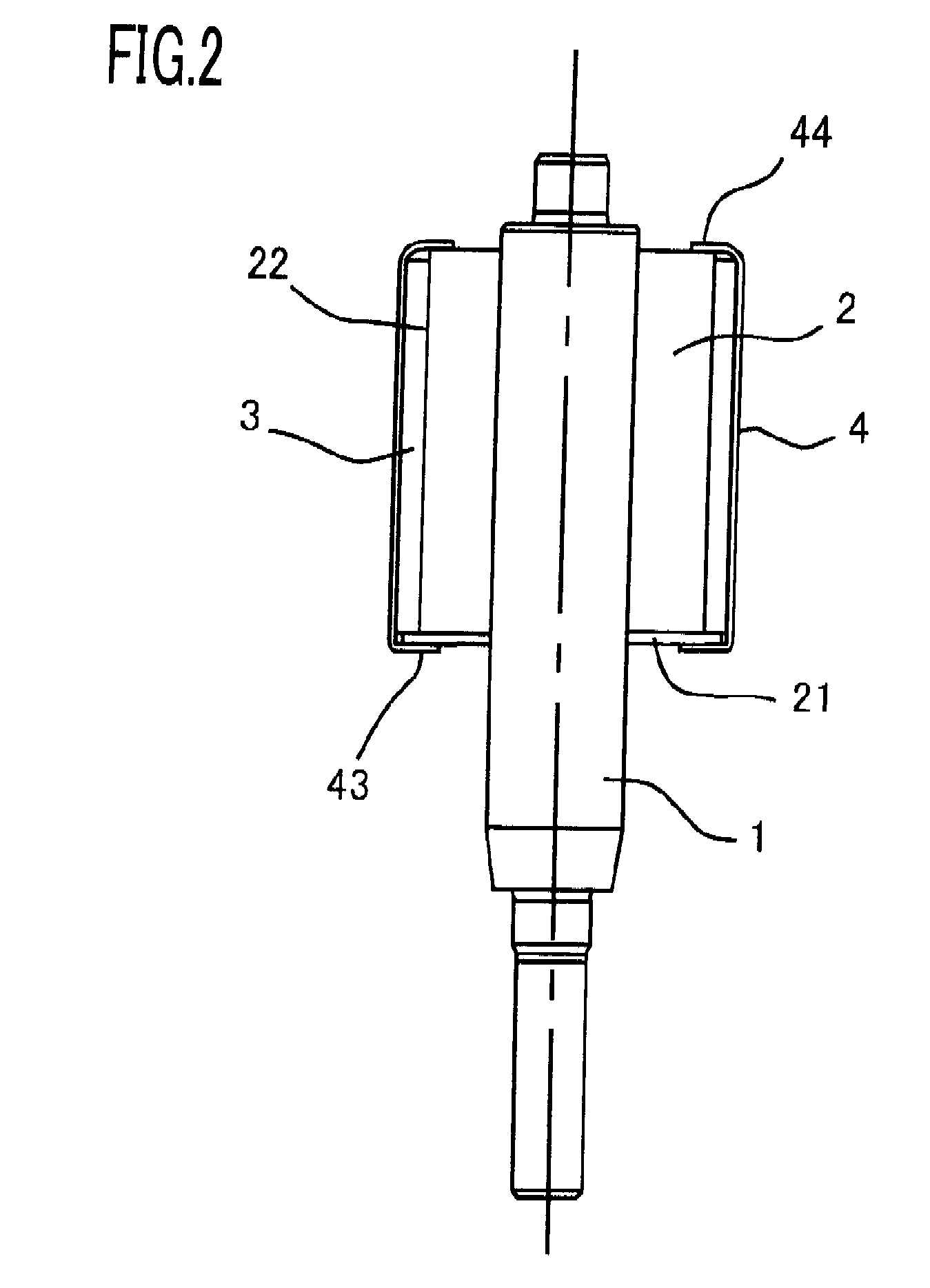Rotor of rotating electrical machine and manufacturing method there for
a technology of rotating electrical machines and manufacturing methods, which is applied in the direction of manufacturing stators/rotor bodies, magnetic circuit rotating parts, and circumferential direction, etc., which can solve the problems of rotating electrical machines that vibration or noise, and the permanent magnet cannot be securely fixed, so as to achieve no physical enlargement or cost increase, neither deterioration nor fluctuation of cogging torqu
- Summary
- Abstract
- Description
- Claims
- Application Information
AI Technical Summary
Benefits of technology
Problems solved by technology
Method used
Image
Examples
embodiment 1
[0041]A rotor of a rotating electrical machine according to Embodiment 1 of the present invention will be explained below with reference to FIGS. 1 to 3. FIG. 1 is an explanatory transverse cross-sectional view of a rotor of a rotating electrical machine according to Embodiment 1 of the present invention; FIG. 2 is an explanatory longitudinal cross-sectional view illustrating the rotor; FIG. 3 is an explanatory transverse cross-sectional view illustrating the rotor. In FIGS. 1 and 2, a rotor shaft 1 of an rotating electrical machine is pivotably supported by bearings (unillustrated) each provided in a pair of brackets (unillustrated). A rotor iron core 2, which is tubularly configured with ring-shaped magnetic thin plates laminated in the radial direction, and the rotor shaft 1, which is inserted into the central through-hole of the rotor iron core 2 through press fitting method or the like, are integrally fixed to each other.
[0042]An end plate 21 is fixed on one axis-direction end ...
embodiment 2
[0055]Next, a rotor of a rotating electrical machine according to Embodiment 2 of the present invention will be explained with reference to FIGS. 4 and 5. FIG. 4 is an explanatory transverse cross-sectional view of a rotor of a rotating electrical machine according to Embodiment 2 of the present invention; FIG. 5 is a partially enlarged explanatory transverse cross-sectional view illustrating the rotor. In FIG. 4, the shape of an aluminum-made non-magnetic ring 4, disposed on the outer circumferential surfaces of magnetic poles 3 formed of a permanent magnet, is formed in such a way that the inner circumferential surface thereof lies on a tangential line 12 that passes on the outer circumferential surfaces of the magnetic poles 3 that are adjacent to each other or on a line that is shifted from the tangential lime 12 toward the rotor iron core 2. In other words, as illustrated in FIG. 5, the distance d, in the radial direction of the rotor iron core 2, between the tangential line 12...
embodiment 3
[0059]Next, a rotor of a rotating electrical machine according to Embodiment 3 of the present invention will be explained with reference to FIG. 6. FIG. 6 is an explanatory transverse cross-sectional view of a rotor of a rotating electrical machine according to Embodiment 3 of the present invention. In Embodiments 1 and 2, the positional restriction on the magnetic pole 3 is realized by the adhesive power, through an adhesive, between a magnetic-pole fixing portion 22 of a rotor iron core 2 and a magnetic pole 3 and by the circumferential-direction positional restriction force of a non-magnetic ring 4; however, in the rotor of a rotating electrical machine according to Embodiment 3, positioning mechanisms that restrict the circumferential-direction positions of the magnetic poles 3 are provided in the rotor iron core 2.
[0060]In other words, in FIG. 6, each of positioning mechanisms 6 is constituted with a protrusion member that extends on the outer circumferential surface of the rot...
PUM
| Property | Measurement | Unit |
|---|---|---|
| angle | aaaaa | aaaaa |
| angle | aaaaa | aaaaa |
| bending angle | aaaaa | aaaaa |
Abstract
Description
Claims
Application Information
 Login to View More
Login to View More - R&D
- Intellectual Property
- Life Sciences
- Materials
- Tech Scout
- Unparalleled Data Quality
- Higher Quality Content
- 60% Fewer Hallucinations
Browse by: Latest US Patents, China's latest patents, Technical Efficacy Thesaurus, Application Domain, Technology Topic, Popular Technical Reports.
© 2025 PatSnap. All rights reserved.Legal|Privacy policy|Modern Slavery Act Transparency Statement|Sitemap|About US| Contact US: help@patsnap.com



